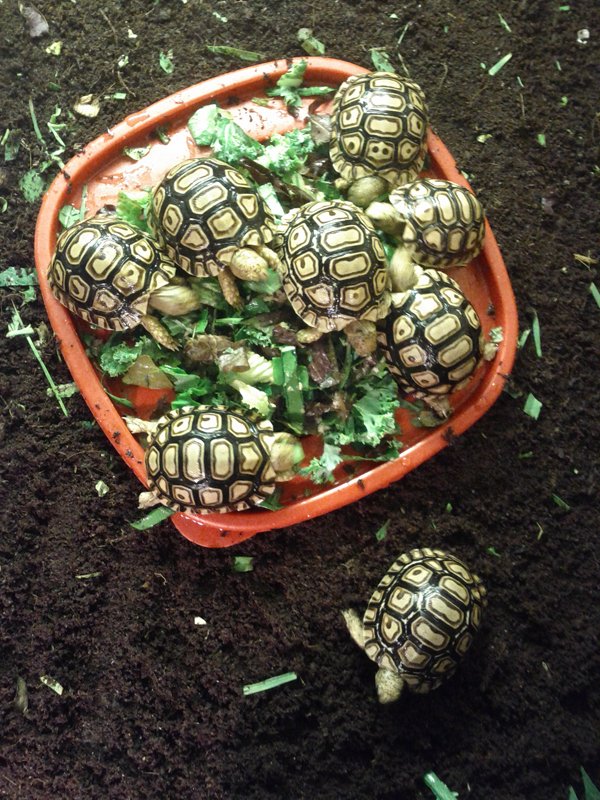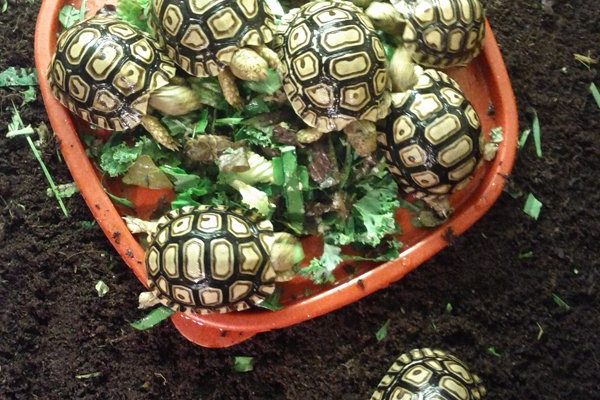
Understanding the lifespan and growth rate of the leopard tortoise isn’t just for enthusiasts; it’s crucial for anyone considering adopting one as a pet or simply wanting to know more about these majestic reptiles. Think of it like planting a tree—knowing how long it will grow and flourish helps you better care for it. So grab your favorite drink, and let’s explore this slow-moving wonder!
What is a Leopard Tortoise?
The leopard tortoise, scientifically known as *Stigmochelys pardalis*, is native to the savannas and grasslands of Africa. With its distinctive yellow and black shell patterns, it looks like a moving piece of art. These tortoises can grow quite large, reaching sizes of up to 18 inches in length and weighing over 50 pounds. Isn’t that impressive?
Leopard tortoises are known for being herbivores, munching on grasses, leafy plants, and even some fruits. Their unique diets and habitats shape their growth and overall health, making it essential to understand their needs if you’re thinking about having one as a pet.
Lifespan of the Leopard Tortoise
One of the most remarkable features of the leopard tortoise is its lifespan. In the wild, these tortoises can live for more than 50 years, with some even reaching 100 years under ideal conditions. This is quite a long time compared to other pets, so it’s a serious commitment for prospective owners.
In captivity, with proper care, diet, and habitat, they can also live long lives. However, it’s essential to mimic their natural environment as much as possible to ensure their well-being. Factors like diet, climate, and companionship all play vital roles in determining their lifespan.
Factors That Affect Lifespan
Understanding the factors that affect the lifespan of leopard tortoises can help you take better care of them. Here are some key points to consider:
- Diet: A balanced diet rich in fiber and low in protein is crucial. Overfeeding or poor nutrition can lead to health issues.
- Habitat: Providing a spacious and safe environment allows for natural behaviors, reducing stress and promoting longevity.
- Healthcare: Regular veterinary check-ups can catch potential health problems early, extending their life.
- Temperature: Since they are ectothermic (cold-blooded), they rely on their environment to regulate their body temperature. An appropriate temperature range is essential for their overall health.
By keeping these factors in mind, you can help your leopard tortoise thrive well past its 50th birthday!
Growth Rate of the Leopard Tortoise
Now let’s talk about growth rates. Leopard tortoises start small, hatching from eggs at about 2 inches in length. They grow rapidly in their early years—often reaching around 6–8 inches in just a couple of years. This is when they absorb a lot of the nutrients needed for robust shell development and overall health.
After this initial growth spurt, their growth rate will slow down. By the time they are about 10 years old, many will be around 12 inches long. The growth process can take anywhere from 10 to 20 years to reach their full size, depending on various factors like diet, habitat, and genetics.
Growth Stages
The growth stages of the leopard tortoise can be broken down into three main phases:
1. Hatchling Stage (0-1 year)
During this stage, hatchlings are incredibly vulnerable. They typically grow the fastest during their first year, especially when provided with a proper diet and optimal living conditions.
2. Juvenile Stage (1-5 years)
This is the phase when tortoises grow significantly. They begin developing their beautiful shell patterns, and you can start to see distinct leopard-like markings. A nutritious diet and ample sunlight will support their rapid growth during this time.
3. Adult Stage (5 years and onward)
Once they reach adulthood, their growth will slow down considerably. They will continue to grow but at a much slower pace, reaching full size around the age of 15 to 20 years. At this point, they become more focused on reproduction rather than growth.
Caring for a Leopard Tortoise
If you’re considering adopting a leopard tortoise, understanding their needs will help you provide the best care possible. Here are a few essential tips:
- Diet: Ensure a varied diet full of greens, hay, and occasional fruits. Avoid high-protein foods that can lead to health issues.
- Habitat: Keep their enclosure spacious and safe. A minimum of 4×8 feet is ideal for a single tortoise.
- Lighting: Proper UVB lighting is crucial for their health, aiding in vitamin D synthesis, which is vital for strong shells.
- Humidity: While they come from dry environments, some humidity helps with shedding and overall health.
If you can provide these conditions, your leopard tortoise could very well live a long and happy life!
Common Misconceptions About Leopard Tortoises
There are plenty of myths about leopard tortoises that can mislead potential owners. Let’s clear up a few:
- Myth 1: They can thrive in any environment. Not true! Leopard tortoises need specific conditions to thrive.
- Myth 2: They don’t require much care. Think again! They need regular maintenance and attention to their diet and health.
- Myth 3: All tortoises live for decades. While many do, not all species share this trait.
Understanding these misconceptions can help ensure that you’re well-prepared for the commitment of owning a leopard tortoise.
Final Thoughts
The leopard tortoise is not just a fascinating creature but also a long-term companion for those who choose to bring one into their lives. With a potential lifespan of over 50 years and a gradual growth process, it’s crucial to understand their needs inside and out. By providing proper care, you can enjoy many years with your leopard tortoise, watching it grow and thrive every step of the way.
So whether you’re thinking about adopting one or simply admire these beautiful creatures from afar, remember: they are not just pets but lifelong friends that deserve care, respect, and love. You might find that having a leopard tortoise is like nurturing a living treasure that enriches your life each day!

